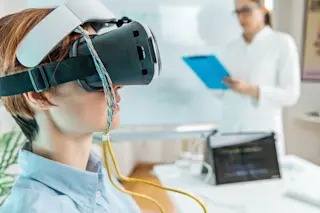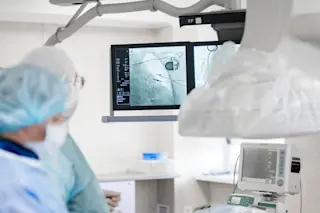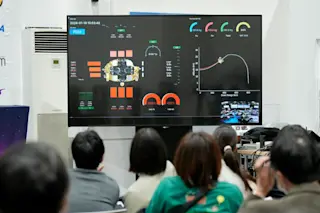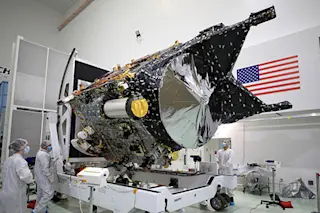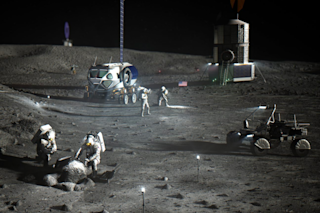The saccule and utricle, two chambers in the inner ear, detect the direction of gravity and help the body to balance. Without their influence, we quickly become lost and disoriented.
To prevent this confusion from happening to astronauts in space, scientists at Brandeis University have proposed a new system that is surprisingly simple.
It involves a series of small vibrating devices that are taped to the skin and vibrate to signal one’s position in space, a kind of mechanical inner ear. Early research has shown that the devices help but must be paired with extensive training so that users follow their input automatically.
In a series of experiments, research subjects trusted the devices and understood how they worked, but that wasn’t enough to overcome the confusion and disorientation they experienced in a simulated zero-gravity environment.
“The trust has to be at a deeper, almost sub-cognitive, level,” said Vivekanand Pandey Vimal, ...



